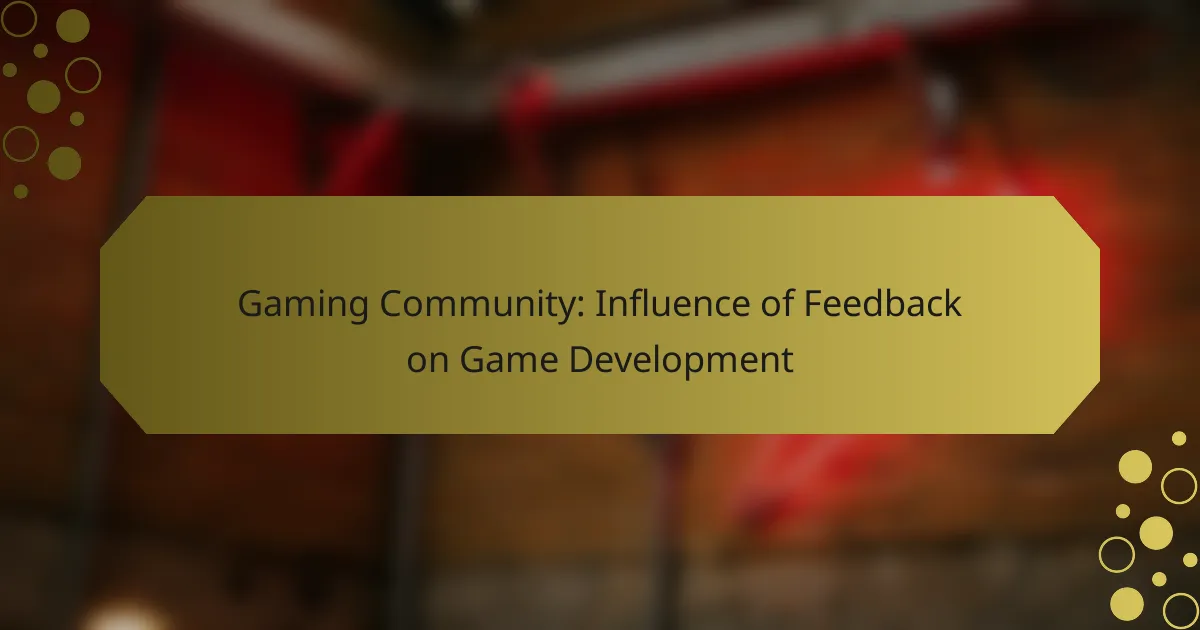The gaming community plays a crucial role in shaping game development through player feedback, which offers valuable insights into preferences and experiences. By utilizing methods such as surveys and community discussions, developers can gather essential input that informs adjustments in gameplay and narrative elements, ultimately enhancing user satisfaction and engagement.
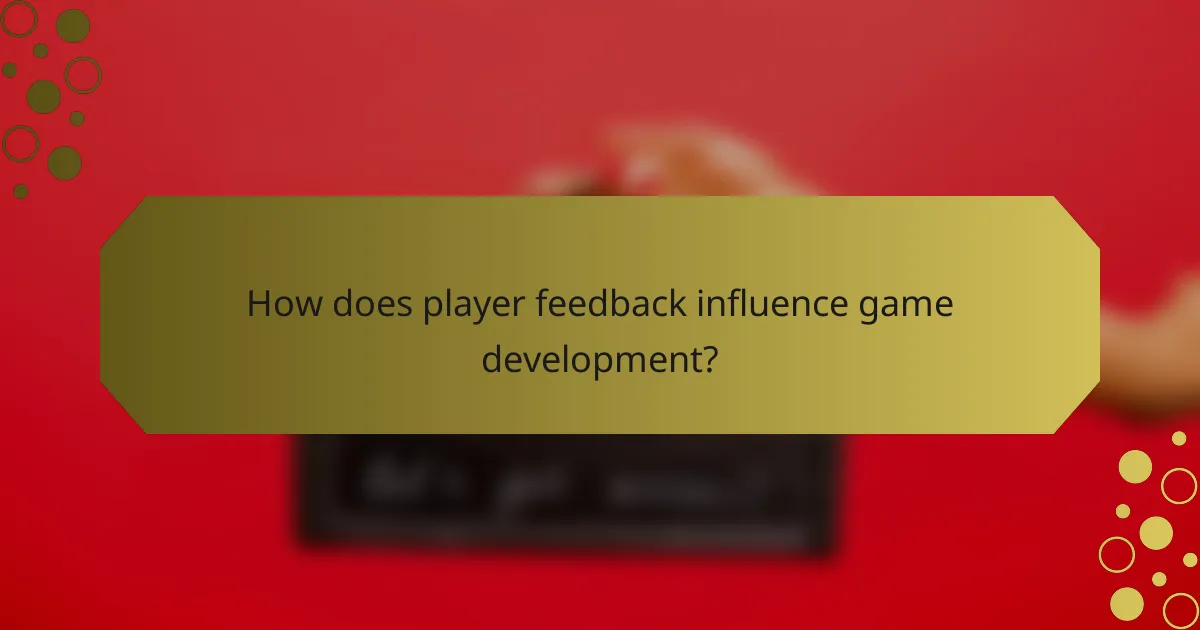
How does player feedback influence game development?
Player feedback significantly shapes game development by providing developers with insights into player preferences and experiences. This input can lead to adjustments in gameplay, narrative elements, and overall user experience, ensuring that the final product resonates with its audience.
Direct impact on game mechanics
Player feedback directly influences game mechanics by highlighting which features are enjoyable or frustrating. Developers often analyze player reports and gameplay data to identify mechanics that may need refinement or complete overhaul. For example, if players find a combat system too complex, developers may simplify controls or adjust the responsiveness of actions.
Incorporating feedback can lead to iterative changes, where mechanics are tested and refined based on player reactions. This process ensures that the game remains engaging and accessible, catering to both casual and hardcore gamers.
Shaping narrative and storylines
Feedback from players can significantly shape the narrative and storylines of a game. Developers may receive insights into which characters resonate well or which plot points feel lacking. For instance, if players express a desire for deeper character development, developers might expand backstories or alter character arcs to enhance emotional engagement.
Moreover, community discussions can reveal preferences for certain themes or endings, prompting developers to explore alternative story paths or multiple endings that cater to diverse player tastes. This responsiveness can create a more immersive and personalized gaming experience.
Adjusting difficulty levels
Player feedback plays a crucial role in adjusting difficulty levels to meet the expectations of various skill levels. Developers often gather data on player performance to determine if a game is too easy or too challenging. For example, if a significant number of players struggle at a particular level, developers may consider reducing the difficulty or providing additional resources to assist players.
Balancing difficulty is essential for maintaining player engagement; too much challenge can lead to frustration, while too little can result in boredom. Developers may implement adjustable difficulty settings, allowing players to tailor their experience according to their preferences.
Enhancing user interface design
Player feedback is vital for enhancing user interface (UI) design, as it reveals how intuitive and user-friendly the interface is. Developers often conduct usability tests and surveys to gather opinions on layout, navigation, and accessibility. If players find certain elements confusing, developers can make necessary adjustments to improve clarity and functionality.
Effective UI design should facilitate a seamless gaming experience, allowing players to focus on gameplay rather than struggling with controls. Regular updates based on player feedback can help ensure that the interface evolves alongside player needs and technological advancements.
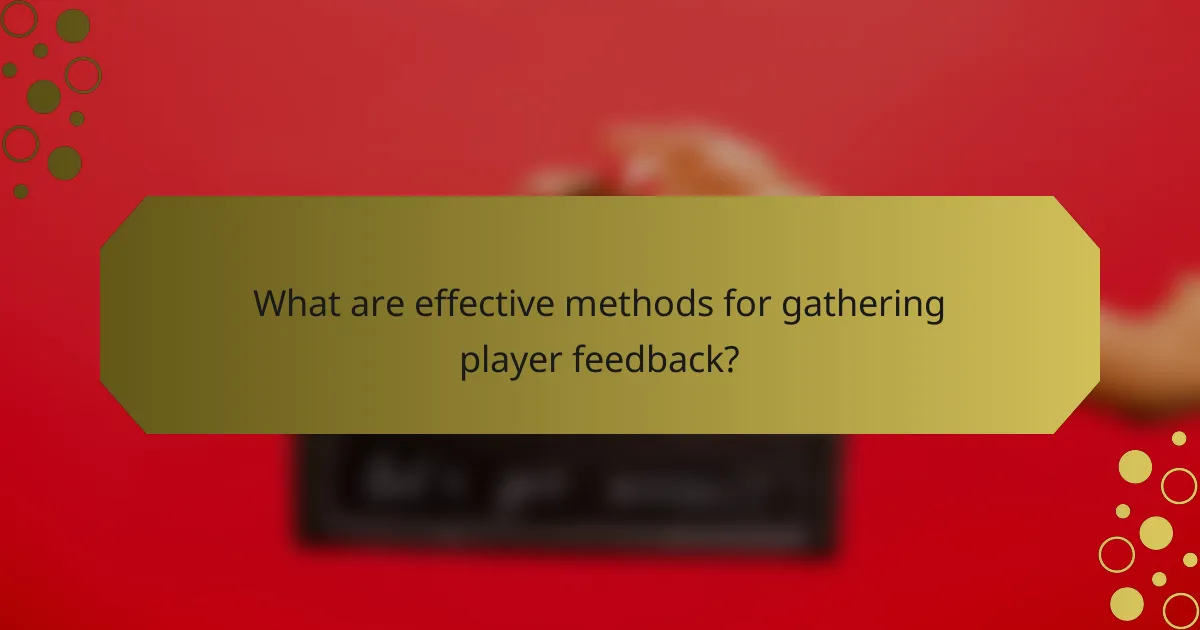
What are effective methods for gathering player feedback?
Effective methods for gathering player feedback include surveys, in-game tools, and community discussions. These approaches allow developers to understand player experiences and preferences, leading to improved game design and player satisfaction.
Surveys and questionnaires
Surveys and questionnaires are structured tools that can collect specific feedback from players about their gaming experience. They can be distributed via email, social media, or in-game prompts, and should include a mix of multiple-choice questions and open-ended responses to capture both quantitative and qualitative data.
When designing surveys, keep them concise to encourage completion. Aim for 5-10 questions that can be answered in under 5 minutes. Offering incentives, such as in-game rewards or entry into a prize draw, can significantly increase participation rates.
In-game feedback tools
In-game feedback tools allow players to provide immediate feedback while they are engaged in gameplay. These tools can take the form of pop-up surveys, feedback buttons, or rating systems that players can access during or after their gaming session.
Implementing these tools requires careful consideration of timing and placement to avoid disrupting the gaming experience. For example, asking for feedback after completing a level or mission can yield more relevant insights. Ensure that the feedback process is quick and user-friendly to encourage player participation.
Community forums and discussions
Community forums and discussions provide a platform for players to share their thoughts and experiences in a more informal setting. These platforms can be hosted on the game’s official website or through social media channels, allowing for ongoing dialogue between players and developers.
Encouraging active participation in these forums can lead to valuable insights and foster a sense of community. Developers should regularly monitor discussions and engage with players by responding to feedback and addressing concerns. This interaction not only helps gather feedback but also builds trust and loyalty among players.
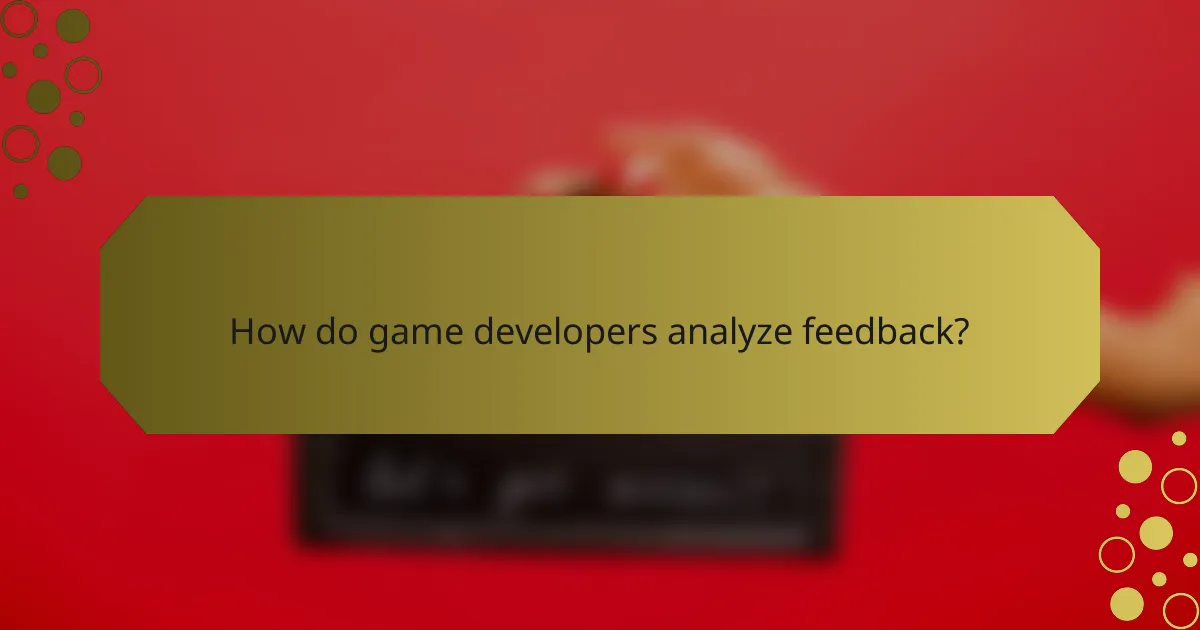
How do game developers analyze feedback?
Game developers analyze feedback through various methods to understand player experiences and improve game design. This process involves collecting data, interpreting sentiments, and tracking player behaviors to make informed decisions about updates and new features.
Data analytics tools
Data analytics tools are essential for game developers to process large volumes of player feedback efficiently. These tools can aggregate data from multiple sources, such as forums, social media, and in-game surveys, providing insights into player preferences and trends.
Common tools include Google Analytics for web traffic, Mixpanel for user engagement, and Tableau for visualizing data. Developers often choose tools based on their specific needs, such as real-time analysis or historical data tracking.
Sentiment analysis
Sentiment analysis helps developers gauge player emotions and opinions regarding their games. By using natural language processing (NLP) techniques, developers can categorize feedback as positive, negative, or neutral, allowing them to identify areas for improvement.
For instance, a surge in negative sentiment following a game update may indicate bugs or design flaws. Developers can use sentiment analysis tools like MonkeyLearn or Lexalytics to automate this process and focus on critical feedback.
Player behavior tracking
Player behavior tracking involves monitoring how players interact with a game to gain insights into their preferences and challenges. This can include analyzing gameplay patterns, session lengths, and in-game purchases to understand what keeps players engaged.
Tools like Unity Analytics and GameAnalytics provide developers with comprehensive reports on player behavior. By identifying trends, such as drop-off points or popular features, developers can make data-driven adjustments to enhance the overall gaming experience.
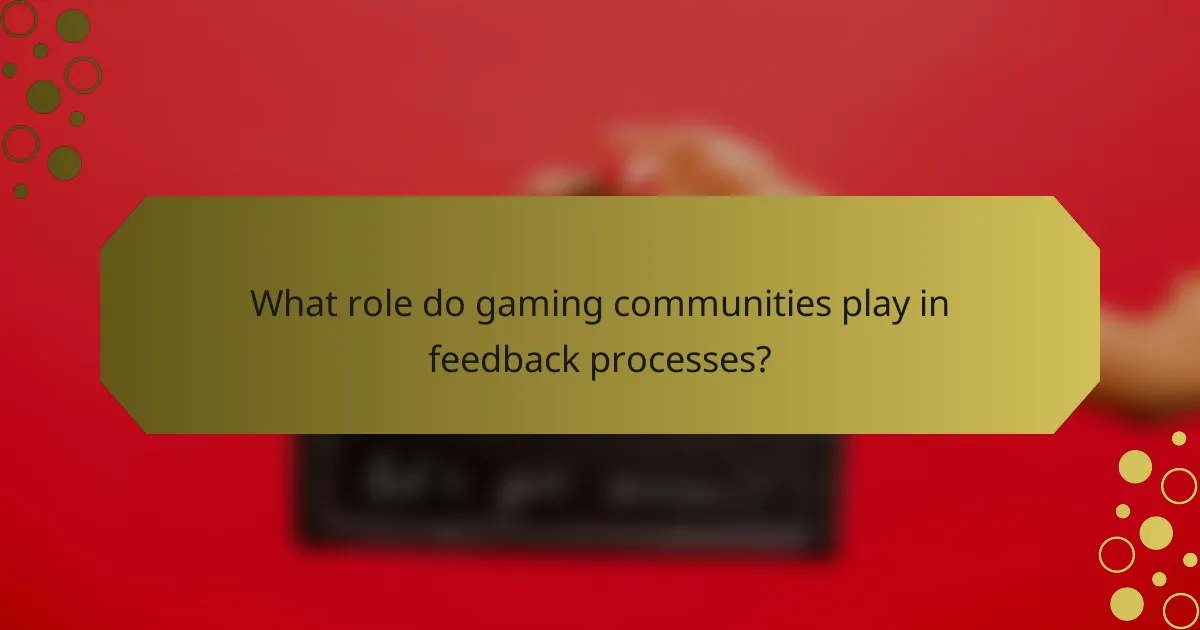
What role do gaming communities play in feedback processes?
Gaming communities are essential in feedback processes, as they provide developers with valuable insights and suggestions that can shape game design and functionality. This interaction fosters a collaborative environment where player experiences directly influence the evolution of games.
Building a loyal player base
Engaging with gaming communities helps developers build a loyal player base by creating a sense of belonging and investment in the game. When players feel heard and see their feedback implemented, they are more likely to continue supporting the game and its developers.
For instance, regular updates based on community suggestions can enhance player satisfaction, leading to increased retention rates. Developers can encourage loyalty by hosting events or forums where players can share their thoughts and experiences.
Facilitating open communication
Open communication between developers and gaming communities is crucial for effective feedback. Developers can utilize platforms like Discord, Reddit, or dedicated forums to create channels where players can voice their opinions and concerns.
This transparency not only builds trust but also allows developers to clarify misunderstandings and gather diverse perspectives. Regularly scheduled Q&A sessions can further enhance this dialogue, ensuring players feel valued and engaged.
Encouraging collaborative development
Collaborative development thrives when gaming communities actively participate in the creation process. Developers can invite players to contribute ideas, test new features, or participate in beta testing, which can lead to innovative solutions and improvements.
For example, community-driven events like game jams or modding competitions can inspire creativity and strengthen the bond between developers and players. By fostering this collaborative spirit, developers can create more tailored and enjoyable gaming experiences.

How can developers implement feedback effectively?
Developers can implement feedback effectively by actively engaging with their gaming community and integrating user suggestions into their development process. This approach not only enhances the game but also fosters a loyal player base.
Iterative development cycles
Iterative development cycles involve repeatedly refining a game based on player feedback. This method allows developers to release updates or patches frequently, addressing issues and incorporating new features that players desire.
For effective iterative cycles, developers should establish clear timelines for feedback collection and implementation. Regular updates, such as bi-weekly or monthly, can keep the community engaged and informed about changes based on their input.
Common pitfalls include rushing to implement changes without adequate testing or failing to communicate updates to the community. Developers should prioritize feedback that aligns with their vision for the game while being open to constructive criticism.
